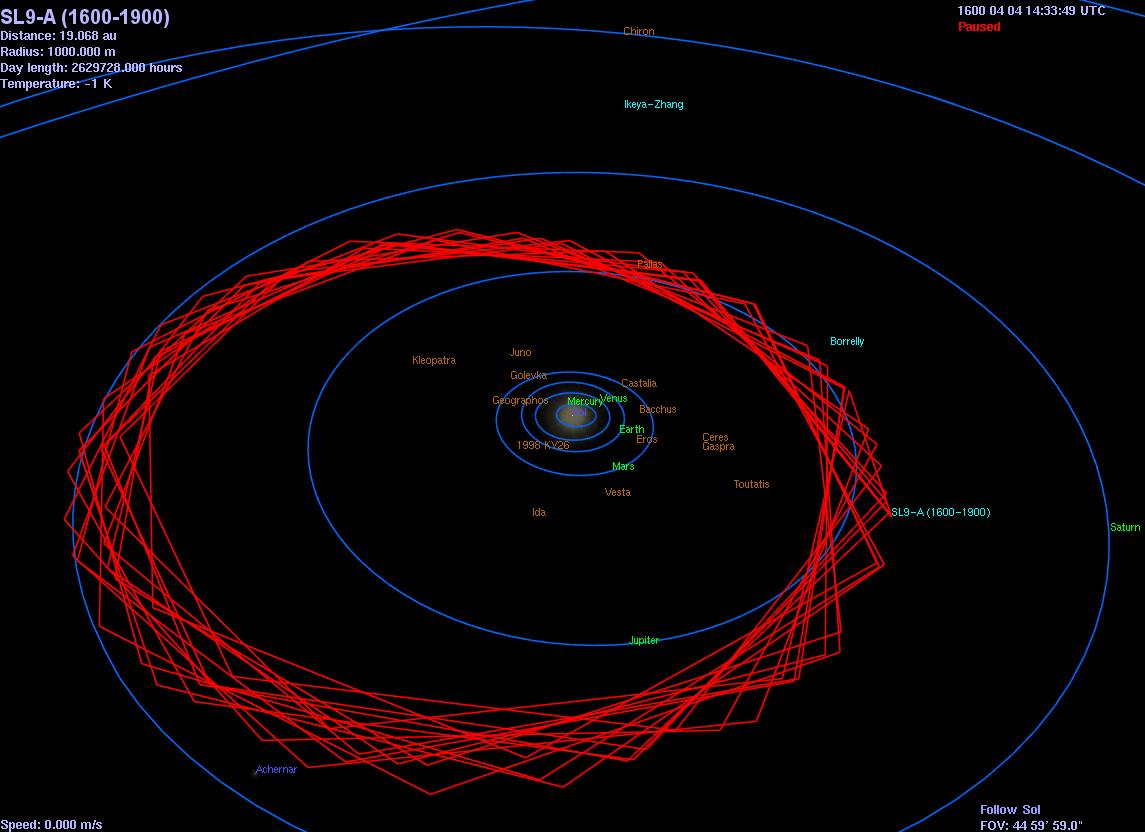Calculus wrote:I think the problem is exactly the same for all planets with moons.
The difference is that all the others (apart from Earth-Moon) have mass ratios that put the barycentre of the system very close to the centre of the parent planet, so the Celestia solution is pretty much indistinguishable from the real motion. Earth-Moon is, as you say, dealt with very well by CustomOrbits. So Pluto is the only planet in the solar system for which the barycentre model makes a significant improvement to the appearance.
Calculus wrote:It is a long time I thought of your way to model the bayrenter orbits but could you tell us, Grant, how accurate this is.
Pretty good. The orientation of the current Pluto-centred solarsys.ssc orbit for Charon is taken from J2000.0 Horizons data. Pluto-Charon are pretty Keplerian in their behaviour - there's only a very slow drift of node and pericentre with time, so the orbital orientation should stay tight for years (and is unlikely to be significant in any case, given the low inclination and eccentricity).
All I did to quickly come up with barycentre-based orbits for Darkbolt was to split the semimajor axis between the two bodies, according to the known mass ratio of Pluto and Charon, and to ensure that the pericentre of Pluto was opposite the known pericentre of Charon. Charon therefore remains in the same orbit relative to Pluto, but Pluto now shifts a little from side to side.
I can probably tighten it a little more by obtaining barycentre orbits for both bodies from Horizons, but I think the major positioning error is going to arise from the theory for the orbit of Pluto, which isn't nearly as tight for the other planets.
Grant

